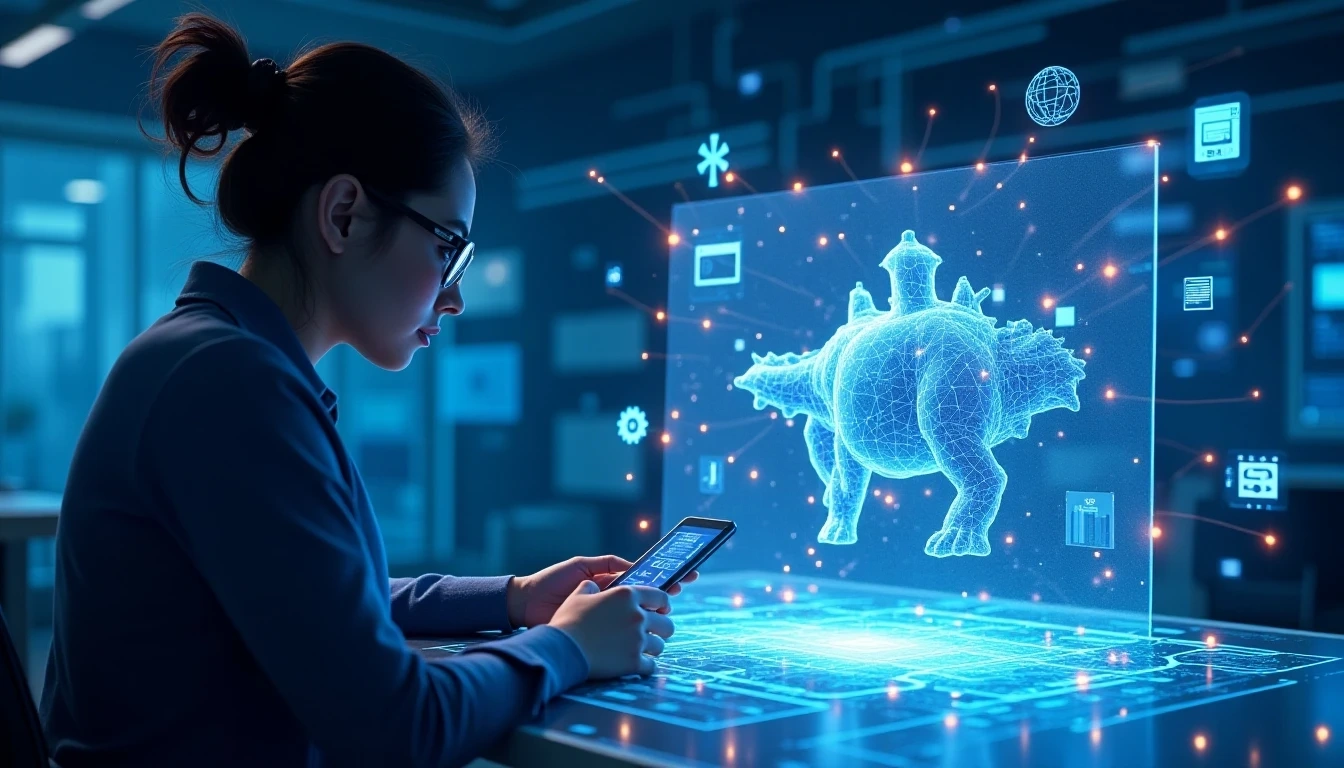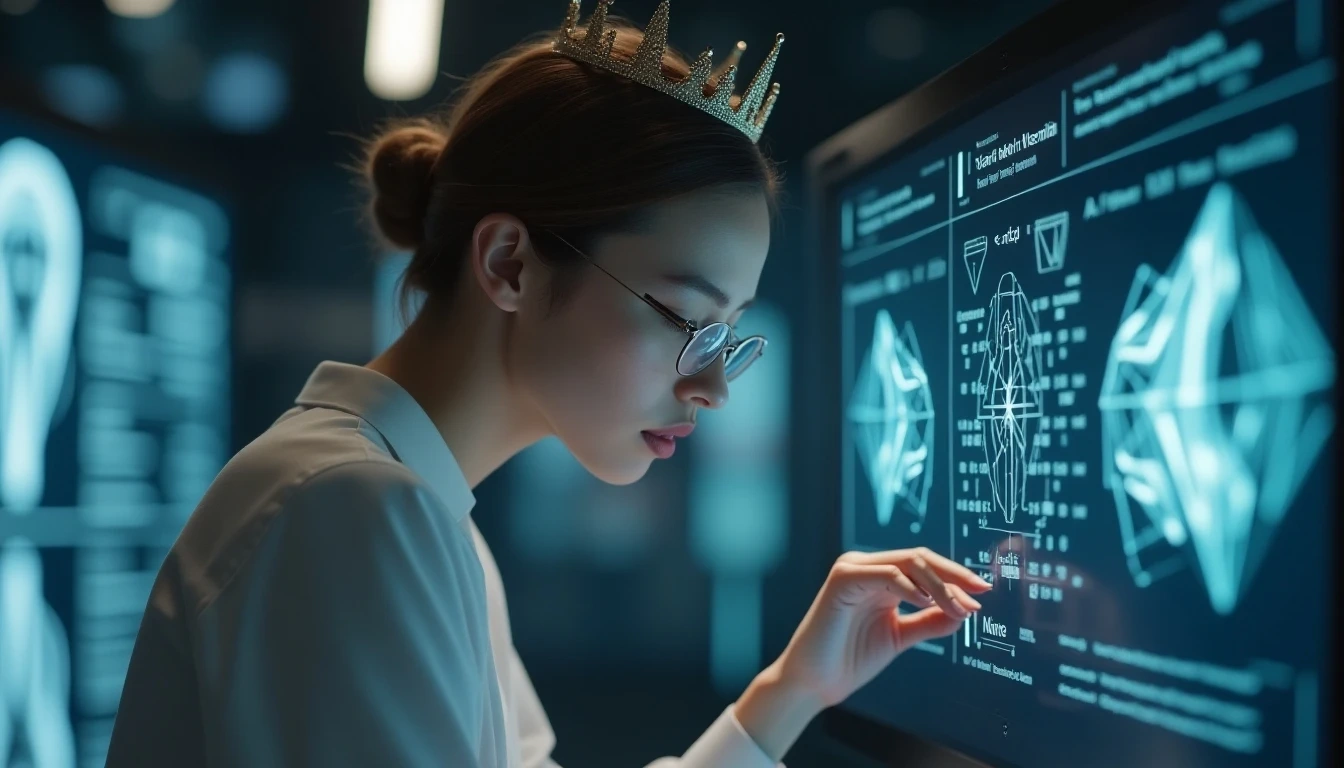3D Designer Career Transformation AI Era Survival Guide: Embrace Change or Be Left Behind?
AI technology is reshaping the 3D design industry, and many designers face unprecedented career challenges. Will AI replace 3D designers? How to maintain competitiveness in the AI era? This article will provide you with a comprehensive career transformation guide to help you find new opportunities in the midst of change.
Current State of 3D Design Industry Under AI Impact
Real Impact of Technological Change
The proliferation of AI 3D generation technology has indeed significantly impacted traditional 3D design work. Platforms like Open3D.art enable non-professionals to generate professional-grade 3D models within 30 seconds, creating profound industry-wide effects.

Directly Affected Job Types:
- Standardized product modeling
- Simple props and decoration creation
- Batch asset generation
- Entry-level concept design work
Relatively Safe Work Areas:
- Complex character modeling and rigging
- Precision industrial design
- Art direction and creative decision-making
- Technical guidance and quality control
Structural Changes in Market Demand
While AI has lowered barriers to basic modeling, it has also created new market demands:
New Demands:
- AI tool usage guidance and training
- Post-optimization of AI-generated content
- Overall planning for complex projects
- Cross-platform integration and technical integration
Growing Demands:
- Creative guidance and artistic decision-making
- User experience design
- Technical solution design
- Project management and coordination
Impact Analysis for Different Designer Levels

Junior Designers: Greatest Impact and Opportunity
Challenges Faced:
- Basic modeling work replaced by AI
- Single skills leading to decreased competitiveness
- Higher entry barriers requiring more comprehensive skills
Transformation Opportunities:
- Learn AI tool usage, become "AI+Design" composite talent
- Specialize in specific niches to create differentiation advantages
- Shift toward creative planning and user research
Action Recommendations:
- Immediately start learning mainstream AI tools
- Choose a professional direction for deep development
- Cultivate communication and project management abilities
- Build personal portfolio and brand
Mid-Level Designers: Critical Period for Skill Restructuring
Current Advantages:
- Solid technical foundation
- Understanding of project workflows and quality standards
- Accumulated industry experience
Transformation Strategy:
- Become expert users of AI tools
- Develop toward management positions or technical specialists
- Develop education and training businesses
- Expand service scope to provide comprehensive solutions
Skill Upgrade Path:
- Master multiple AI generation tools
- Learn new software and workflows
- Cultivate business sensitivity and market insight
- Develop team collaboration and leadership abilities
Senior Designers: Strategic Transformation and Value Reshaping
Core Value:

- Rich industry experience and network resources
- Deep creative understanding and aesthetic judgment
- Complex project coordination and management capabilities
Development Directions:
- Art directors and creative directors
- Technical consultants and industry experts
- Independent entrepreneurship or consulting services
- Education, training, and knowledge dissemination
Value Enhancement Strategies:
- Build personal brand and influence
- Develop standardized service products
- Construct professional networks and partnerships
- Explore new business models
Core Competitiveness Restructuring Strategies
From Technical Execution to Creative Guidance
Traditional Role: Execute specific modeling tasks according to requirements New Era Role: Guide AI to generate content meeting creative requirements
Required Skill Transitions:
- From mastering software operations to understanding AI tool characteristics
- From completing specific modeling to formulating creative strategies
- From individual execution to team coordination
- From technical implementation to business understanding
Professional AI Tool Applications
Becoming an AI Tool Expert:
- Deep mastery of mainstream AI platform characteristics and advantages
- Develop efficient AI-assisted workflows
- Establish quality standards for AI-generated content
- Provide AI tool training and guidance for teams
Professional Services:
- Post-optimization of AI-generated content
- AI application strategies for complex projects

- Cross-platform AI tool integration
- Customized AI solution development
Cross-Domain Capability Integration
Technology + Business:
- Understand customer needs and market trends
- Formulate technical implementation plans
- Control project costs and schedules
- Provide consulting and advisory services
Design + Management:
- Project planning and resource allocation
- Team building and task assignment
- Quality control and standard setting
- Customer communication and relationship maintenance
Exploring Emerging Career Opportunities
AI Prompt Engineer
As AI tools proliferate, roles specifically responsible for optimizing prompts and parameters become important:
Responsibilities:
- Research and optimize AI generation prompts
- Establish standardized generation processes
- Train teams in AI tool usage
- Solve technical problems in AI generation
Skill Requirements:
- Deep understanding of AI model characteristics
- Excellent logical thinking abilities
- Sharp visual judgment
- Continuous learning and experimental spirit
AI Content Quality Control Specialist
Job Content:
- Establish quality standards for AI-generated content
- Design quality inspection processes and tools
- Train quality control teams
- Continuously optimize quality systems
Development Prospects:

As commercial applications of AI-generated content increase, quality control becomes increasingly important, offering significant growth potential for this position.
Mixed Reality Designer
Emerging Fields:
- VR/AR content design
- Metaverse space design
- Interactive experience design
- Immersive media production
Skill Combinations:
- Traditional 3D design skills
- Proficient AI tool application
- Interactive design concepts
- User experience thinking
Learning Paths and Skill Maps
Short-term Learning Goals (1-3 months)
AI Tool Mastery:
- Register and become proficient with mainstream platforms like Open3D.art
- Learn prompt optimization techniques
- Understand characteristics and applicable scenarios of different tools
- Establish AI-assisted workflows
Portfolio Updates:
- Create works showcasing AI+traditional skill combinations
- Document learning processes and skill improvements
- Build online portfolio platforms
- Participate in relevant communities and discussions
Medium-term Development Planning (3-12 months)
Professional Deepening:
- Choose specific industries or application areas for specialization
- Build professional knowledge systems in those areas
- Establish connections with industry experts
- Participate in relevant project practice
Business Capabilities:
- Learn project management and business analysis
- Understand market trends and customer needs
- Cultivate communication and marketing abilities
- Explore business collaboration opportunities
Long-term Career Planning (1-3 years)
Professional Status:
- Establish expert reputation in specific fields
- Publish professional articles and case studies
- Participate in industry conferences and events
- Become opinion leaders and influencers
Business Development:
- Develop unique service products
- Build stable customer relationships
- Explore diversified income sources
- Consider entrepreneurship or partnership opportunities
Industry-Specific Transformation Strategies
Game Industry Designers
Transformation Directions:
- AI asset pipeline specialists
- Technical art directors
- Independent game developers
- Game AI technology consultants
Key Skills:
- Proficient use of AI tools for rapid game asset generation
- Understanding of game engines and technical limitations
- Master game design concepts and user experience
- Track game AI technology development trends
Architectural Visualization Designers
Transformation Opportunities:
- BIM+AI integration specialists
- Virtual architectural experience designers
- Architectural AI consulting advisors
- Real estate tech company CTOs
Development Focus:
- Integrate AI tools into architectural design workflows
- Develop virtual reality display solutions
- Provide architectural industry AI application consulting
- Explore smart building and IoT integration
Product Designers
Emerging Roles:
- Smart product designers
- User experience researchers
- Design thinking consultants
- Innovation product managers
Capability Building:
- Combine AI tools for rapid prototyping
- Deep understanding of user needs and market trends
- Master design thinking and innovation methods
- Cultivate interdisciplinary collaboration abilities
Psychological Adaptation and Career Planning
Overcoming Technology Anxiety
Correct Understanding:
- AI is a tool, not a replacement
- Technological progress creates new opportunities
- Human creativity remains irreplaceable
- Learning ability is more important than existing skills
Positive Action:
- Actively learn and practice new technologies
- Participate in relevant communities and discussions
- Find like-minded learning partners
- Maintain open and curious mindset
Building Growth Mindset
Continuous Learning:
- Establish daily learning habits
- Follow industry development trends
- Participate in online courses and training
- Practice new projects and challenges
Adapting to Change:
- Accept uncertainty
- Cultivate problem-solving abilities
- Develop diversified skill sets
- Build flexible career planning
Successful Transformation Case Studies
Case 1: From Modeler to AI Consultant
A senior 3D modeler became an AI application consultant for multiple companies through deep learning of AI tools:
Transformation Path:
- Deep learning of AI platforms like Open3D.art
- Promoting AI tool applications in original company
- Accumulating AI project experience and cases
- Building personal brand and professional reputation
- Starting independent consulting services
Success Factors:
- Solid technical foundation
- Strong learning ability
- Good at summarizing and sharing
- Built professional networks
Case 2: Traditional Studio Digital Transformation
A small 3D studio successfully transformed into an efficient digital design service provider by introducing AI tools:
Transformation Strategy:
- Company-wide training in AI tool usage
- Redesigning service processes
- Developing AI+human hybrid services
- Expanding new customer segments
- Building differentiated competitive advantages
Benefits:
- 300% improvement in production efficiency
- 50% reduction in service costs
- Significant improvement in customer satisfaction
- Rapid expansion of business scale
Practical Action Guide
Immediate Actions to Start
- Technical Learning: Register for Open3D.art today and start learning
- Community Participation: Join relevant professional groups and forums
- Work Creation: Create showcase works using AI tools
- Network Building: Actively contact industry peers and experts
30-Day Action Plan
Week 1:
- Familiarize with basic AI tool operations
- Read industry development reports
- Create learning plans
Week 2:
- Deep learning of prompt optimization
- Create first AI-assisted work
- Participate in online discussions
Week 3:
- Explore different application scenarios
- Build personal portfolio
- Seek practical opportunities
Week 4:
- Summarize learning outcomes
- Create medium-term development plans
- Start network building
Continuous Development Strategy
Skill Updates: Learn a new AI tool or technology each month Work Accumulation: Complete at least one AI-assisted project weekly Network Expansion: Meet at least 5 new industry contacts monthly Knowledge Sharing: Regularly share learning insights and project experiences
Future Outlook and Opportunities
Technology Development Trends
- AI generation quality will continue improving
- Real-time generation and interaction will become possible
- Multi-modal AI will bring more possibilities
- Personalized customization will become mainstream
Industry Development Opportunities
- Enormous emerging market for AI+design
- Rapid growth in education and training demand
- Consulting services market is emerging
- Innovative applications emerge continuously
Summary: Embrace Change, Create the Future
The arrival of the AI era is not the end for 3D designers, but a new beginning. The key lies in:
- Active Learning: Actively master AI tools and new technologies
- Value Reshaping: Transform from executors to guides and creators
- Continuous Adaptation: Maintain learning and change capabilities
- Innovative Thinking: Explore innovative applications of AI technology
Remember, what's truly valuable is not resisting change, but leading change. Those designers who can proficiently use AI tools, possess innovative thinking, and understand business needs will gain greater development opportunities in the new era.
Starting today, visit Open3D.art and begin your AI era career transformation journey. The future belongs to those who dare to embrace change and continue learning and growing. Are you ready?